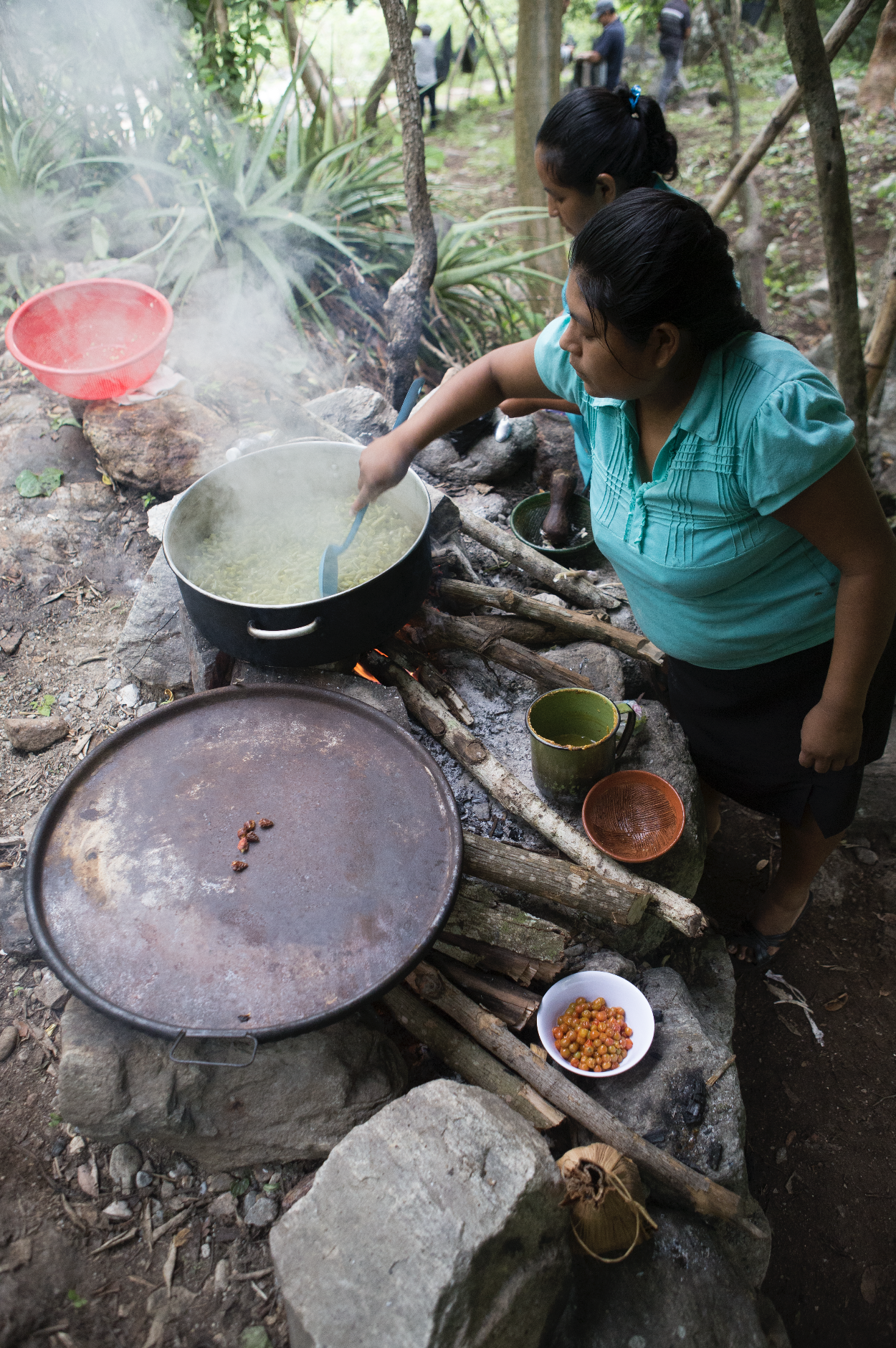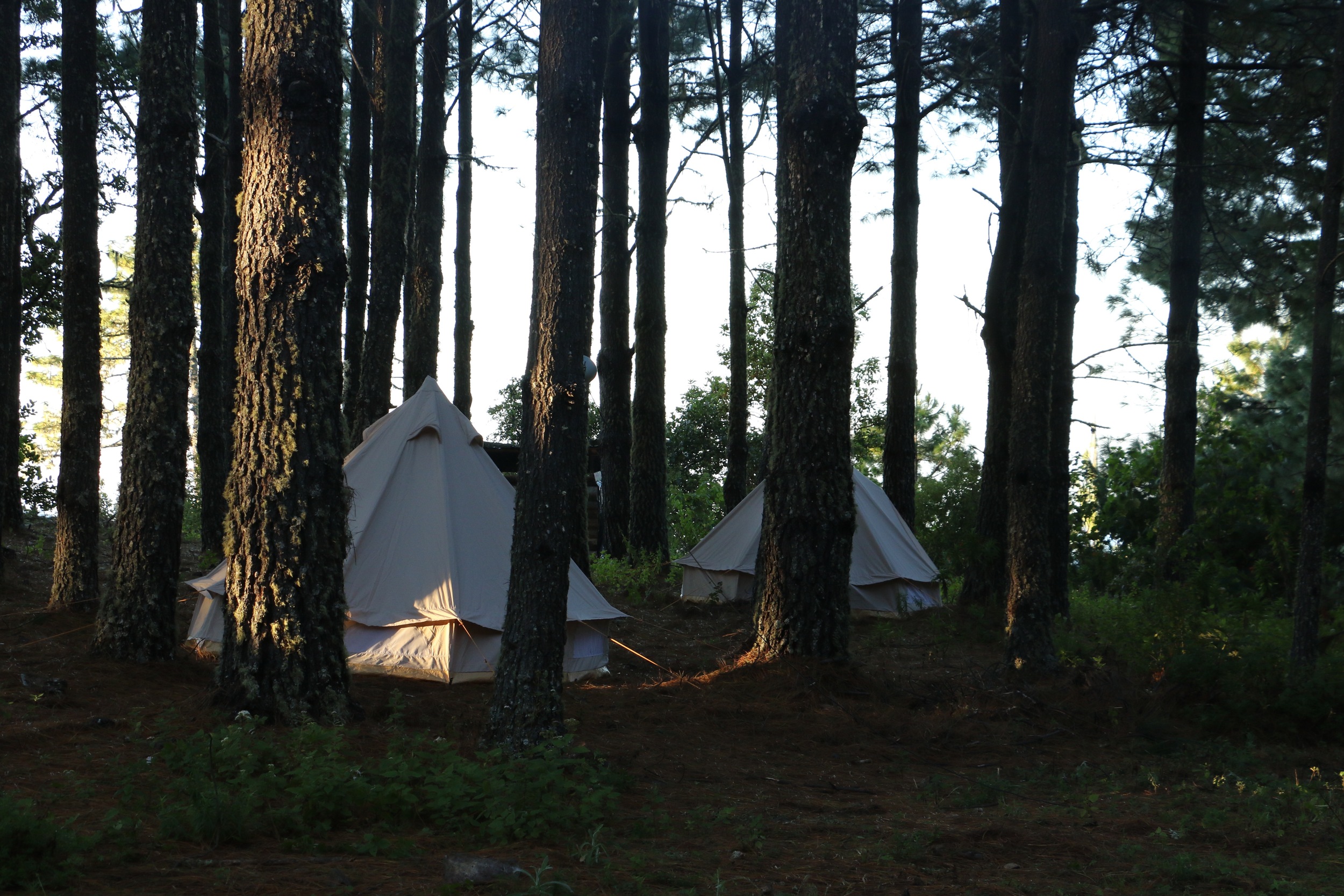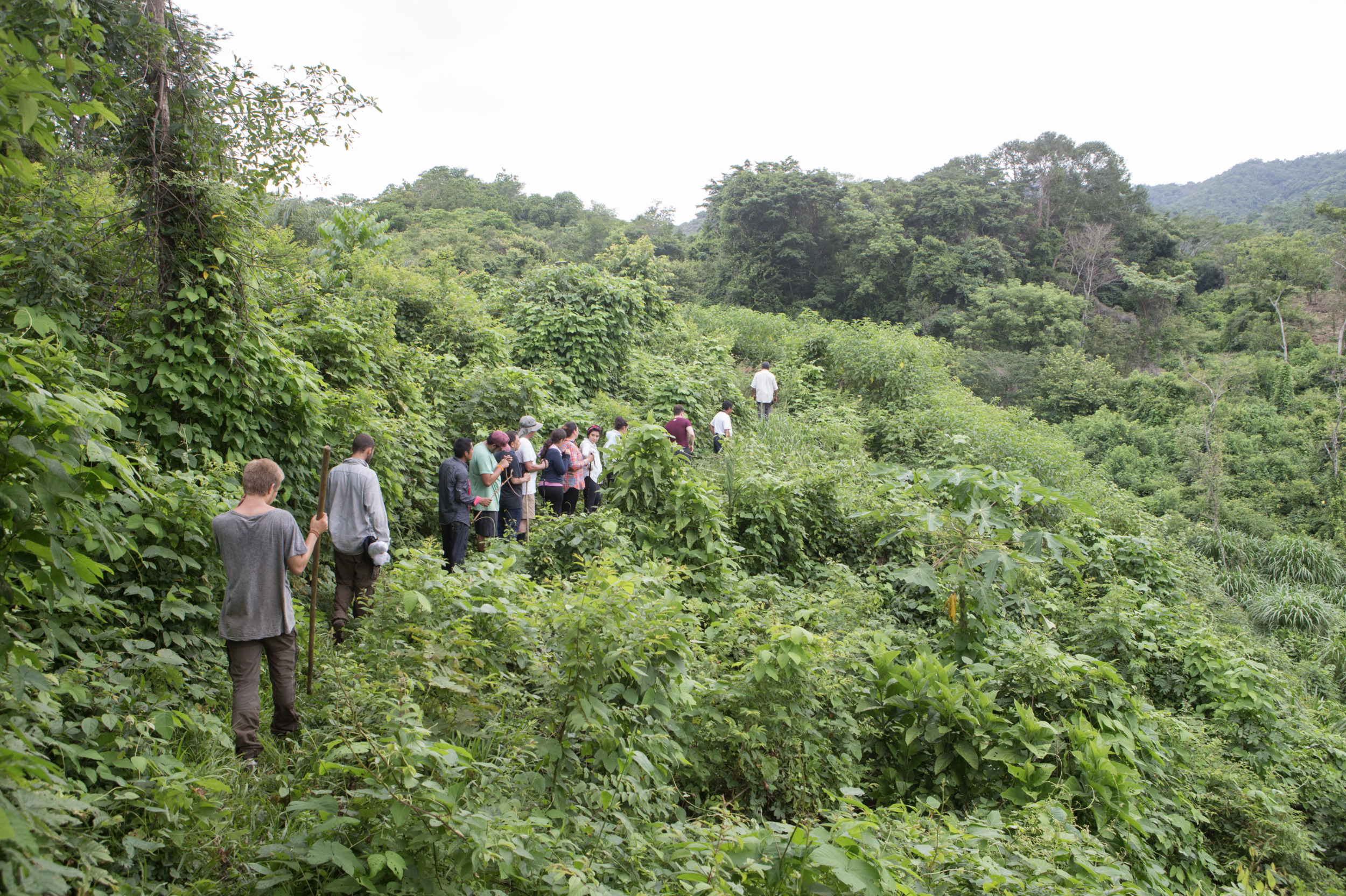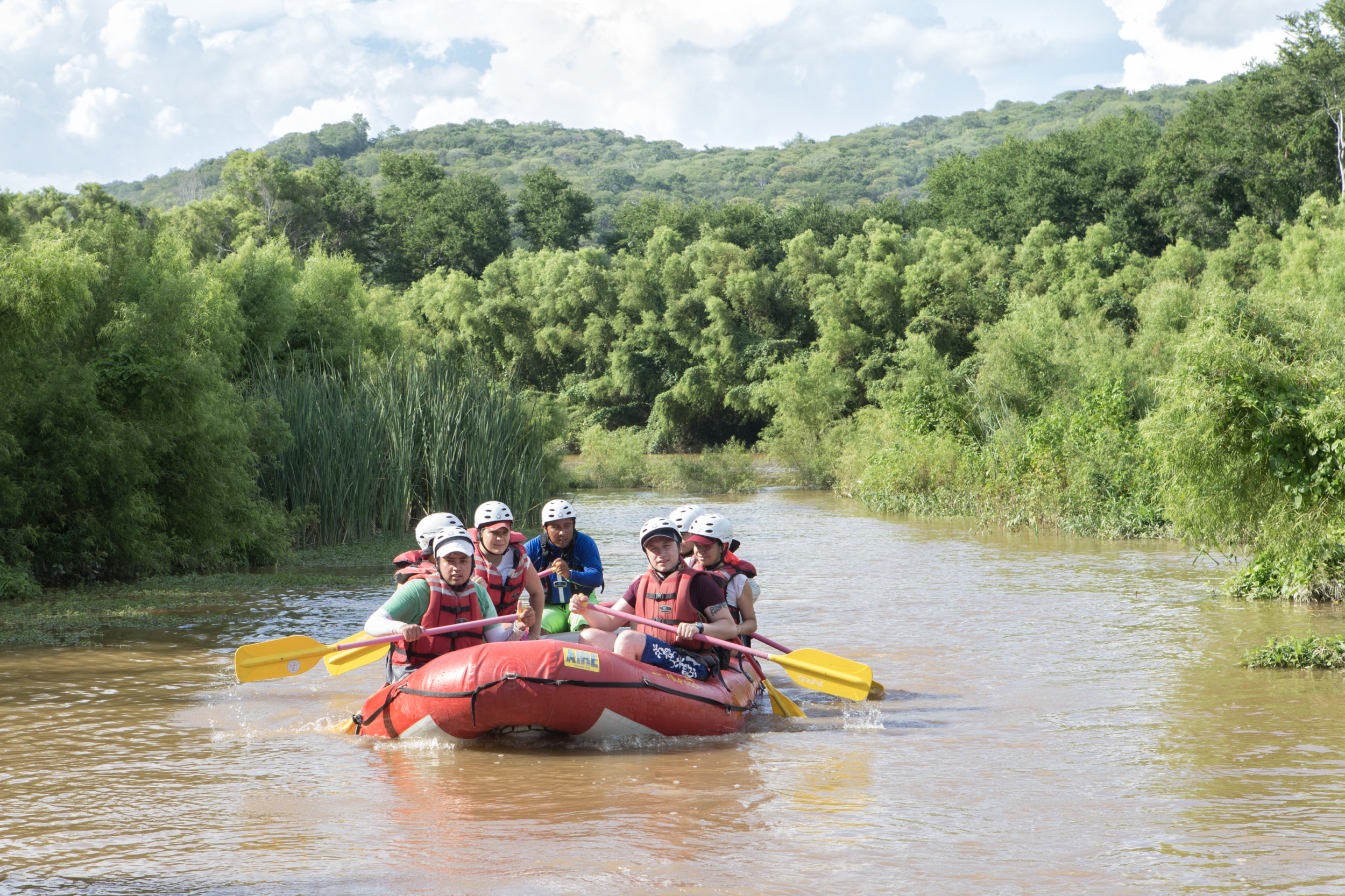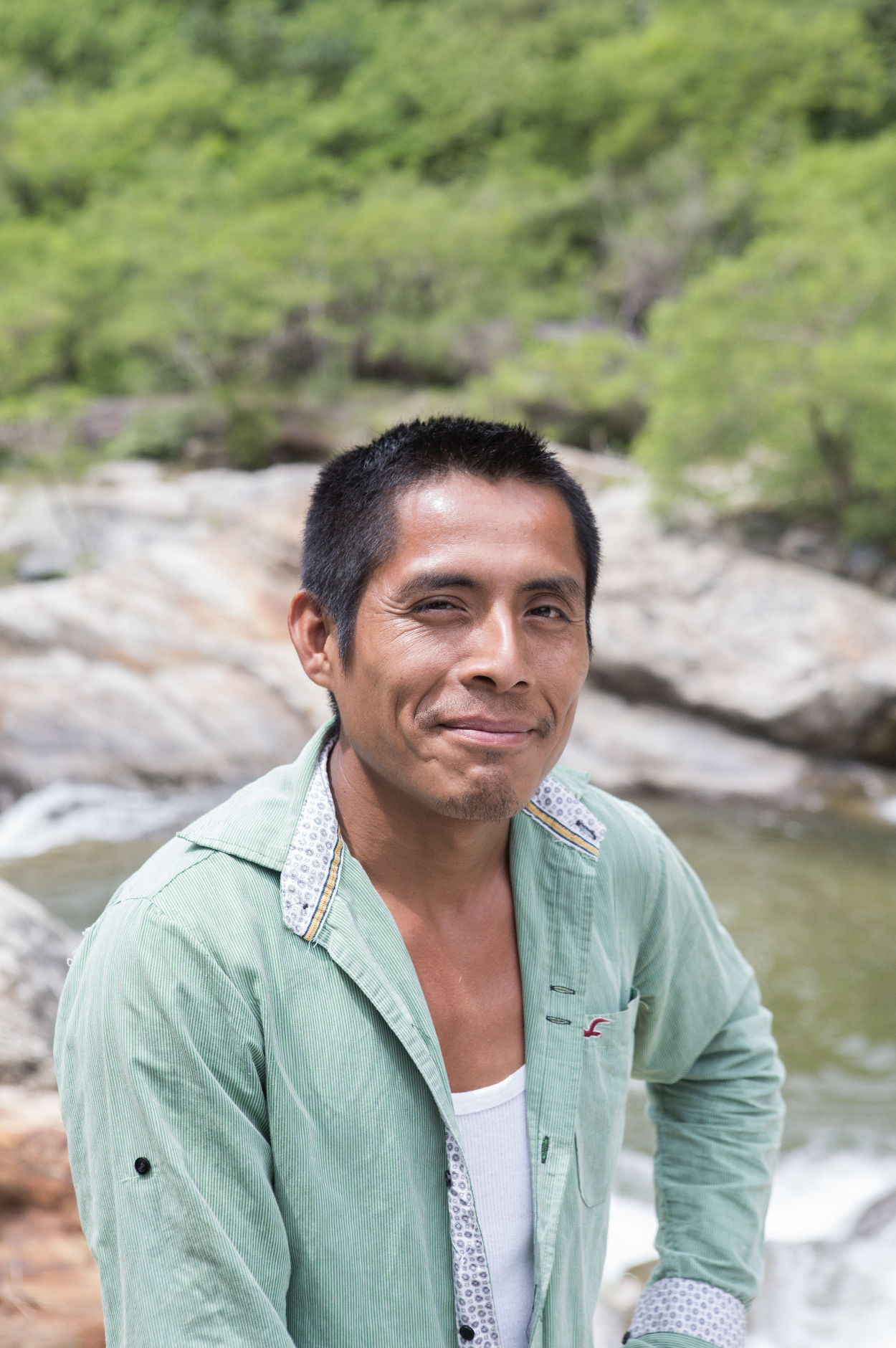Itinerary
Day 1: Sunday. Into the Mountains.
We leave Oaxaca City at 9am. We´ll drive through the beautiful Sierra Madre for approx. 6 hours until we reach the first community. .
This is an agrarian community deep in the mountains, whose economic activities include organic honey, coffee, tomatoes, and avocado prodcution, as well as a fully sustainable community-owned logging company.
The community has breathtaking views of the mountains, and is a great example of a well organized, progressive community with an above average quality of life. We´ll savor local flavors in the camp located within the community forest.
Day 2: Monday . Hiking time: 6 hours. Difficulty: Medium.
After breakfast, our community guide will take us along the pine and fir forests to the second community of our journey. This trail crosses through the sustainable forestry parcels and includes great views fromt he mountain ledges.
Lunch at 12:30, arrive at camp at 3pm.
Day 3: Tuesday. Hiking time: 9-10 hours. Difficulty: HIGH.
Throughout this trail not only will we encounter beautiful landscapes, but we will also experience the biological diversity of the area and see how different products are harvested under different climate zones. This is a Zapotec community and that is the common dialect used to communicate amongst its people.
The trail continues until we reach the bottom of the ravine where the communities of SFO and San José Ozolotepec meet. San José is also a Zapotec community, and it can only be reached by foot. Here we will rest alongside the river and change guides. From this point on, because we will cross the river at different points, it is highly recommended to wear waterproof shoes. We will also have a chance to swim and relax in the river.
Day 4: Wednesday. Hiking time: 6-7 hours. Difficulty: Medium.
We will follow the river and cross through areas of mango, coffee, guanacastles and ceiba trees. We will be accompanied by guides from the San Felipe Lachilló community, where we will spend most of the day.
Arrival at Yuviaga at around 3:30 pm. Yuviaga is a paradisiacal fresh water spring where we will have a chance to swim. We will also visit cave paintings found in that area that trace back thousands of years.
Day 5: Thursday. Hiking Time: 6 horas. Dificultad: Medium.
Today we will walk through an impressive Guanacastle tree forest and an abandoned coffee plantation. We are now in coastal vegetation, very humid, very green, and very dense.
We will arrive at the tiny community of Mandimbo at aprox. 4 pm. Here they are also coffee growers, but in addition have bamboo plantations, and more uniquely a bromelia and medicinal plant project operated by the knowledgeable women of the community.
Day 6: Friday. Rafting: 6 hours. Dificultad: Low.
We will walk down to the Copalita River where rafts or kayaks will be waiting for us.
We will row for 3 hours before reaching the community of La Blas, a haven for hundreds of bird species. After lunch and a brief rest, we will row for 3 more hours until we reach La Bocana Beach, located in Huatulco. La Bocana is a huge beach occupied only by a small fish restaurant and a few surfers.
End of Trail
Scheduled Dates
All trips depart on a Sunday from Oaxaca City and arrive the following Friday to Huatulco.
2025
26 - 31 october
9 - 14 november
23 - 28 november
7 - 12 december
2026
4-9 enero
18-23 enero
1-6 febrero
15-20 febrero
What you are supporting
Camino Copalita is a social enterprise operated by the 9 agrarian and Zapotec communities of the Southern Oaxacan Sierra. These communities make up the watershed of the Copalita River Valley, and have joined their efforts to ensure the preservation of their biodiversity, clean water and fertile soil. They have aptly named their group of communities SICOBI: Community Biodiversity System.
By joining a Copalita Trail journey, you not only experience the beauty of agrarian communities first hand, but you support their efforts to preserve this biome, along with it´s traditions, and sustainable food production practices, which include shade coffee of the highest worldwide ranking, GMO and agrochemical free corn, honey, tomatoes, beens, and avocados.
Camino Copalita´s goals also include empowerment of women within the communities. Tourism committees are headed and operated by women, which means they have a voice and vote in the design of the project and in the handling of the revenues . Additionally, the project is creating an incentive to return to native food sources and revalue their heritage.
Camino Copalita was designed with Fair Trade principles, meaning that 70% of the trip cost will directly benefit the communities involved.
FREQUENTLY ASKED QUESTIONS
What age range is allowed?
We feel the trail is fine for any healthy person between the ages of 11 and 65. If you are over 65, we discourage the trek unless you are in top physical shape and have previous multiday trekking experience.
Do you have vegetarian/vegan/gluten free options?
As long as you´re not allergic to corn, you should be fine. A lot of vegan travellers have lived the Copalita experience with no complaints.
Where does the trip begin and end?
The trip always begin on a Sunday at 9am in Oaxaca City and ends in Huatulco on a Friday at 6pm.
What should I pack?
See recommended packing list here
Can I shower along the way?
You will be able to bathe on the 3rd, 4th, and 5th nights. Please take biodegradable soap with you.
How many people per tent?
2 people. If the group is small, you might get a single tent, but no guarantees. Starting on the 3rd night a lot of people choose to sleep on our hammocks with insect repellent nets.
What is the best month to visit Camino Copalita?
Each date has something special that makes it a great month to visit.
During the winter, it is easier hiking because there is no rain. The river still has plenty of water to raft on the last day, and there are few insects. You will not see the fields with corn or any crops.
During the spring, the nights are less cold and the cloudless sky allow for amazing vies, but there is very little water in the rivers, which makes rafting very complicated.
During the summer the route is very green and you can see the milpas bursting wit crops. The river is intense and fun, but you will likely get wet every day.
During the autumn the nights are cold but there is still plenty of water in the rivers to enjoy rafting. You probably still get wet 1-2 days.
* It is cold during the first 2 nights year round.
Is it safe to hike through Oaxaca?
Very safe. We have not had a single security incident thus far. The communities are very well organized and communicate with each other. There are no illegal drugs being harvested, and it is not a migration route. The communities make a good living out of coffee and honey production.
¿How many kms do we walk?
We walk 70kms and row up to 30 more (depending on how much water the river is carrying we decide at what point of the river we get on the rafts). We walk between 16-23 kms per day
Can I take my dog?
We do not allow any pets on the journey
Is there an alternative to do a shorter trek?
It is impossible to start or end the Copalita Trail anywhere else other than where it is now. There simply are no alternative access/exit routes.
Is there cell or regular phone signal?
No. However, we travel with a GPS that can send/receive important emails. We let your loved ones know you´re ok at the end of each day.
How fit do I need to be?
As long as you´re healthy and with a good attitude, you should be fine.
Should I take a tent?
No, we´ll provide it
Do you have English speaking guides?
No, but we trust that we always have bilingual travelers who are willing to translate for non Spanish speakers.
Can I do the Copalita Trail on a different date?
No. We cannot open new dates
Can I send my luggage directly to Huatulco?
A lot of travellers have used this company and have been satisfied: https://aragal.mx
Getting There and Away
"May god protect people from other communities that pass through this road."
Attentively,
Ernesto
Oaxaca City is a UNESCO protected colonial city, perhaps the most attractive destination the country has to offer.
It has a well connected international airport, with direct flights from several US cities.
The trek ends in Huatulco, also a popular international tourist destination.
Huatulco airport has several international airlines making daily trips.
FREQUENTLY ASKED QUESTIONS
¿Can I take my kids?
As long as they´re at least 11 years old, and you feel they are up to hiking 6-9 hours a day, that´s fine.
¿Where does the trip begin and end?
The trip always begin on a Sunday at 9am in Oaxaca City at Café Ciudadanía in Lomas de Crestón and ends in Huatulco on a Friday at 6pm.
¿What should I pack?
See recommended packing list here
¿Can I shower along the way?
You will be able to bathe on the 3rd, 4th, and 5th nights. Please take biodegradable soap with you.
¿How many people per tent?
2 people. But starting on the 3rd night a lot of people choose to sleep on our hammocks with insect repellent nets.
¿What is the best month to visit Camino Copalita?
Each date has something special that makes it a great month to visit.
During the winter, it is easier hiking because there is no rain. The river still has plenty of water to raft on the last day, and there are few insects. You will not see the fields with corn or any crops.
During the spring, the nights are less cold and the cloudless sky allow for amazing vies, but there is very little water in the rivers, which makes rafting very complicated.
During the summer the route is very green and you can see the milpas bursting wit crops. The river is intense and fun, but you will likely get wet every day.
During the autumn the nights are cold but there is still plenty of water in the rivers to enjoy rafting. You probably still get wet 1-2 days.
It is cold during the first 2 nights year round. And it is also considerably warm during the last 3 days. Hard to estimate exact temperatures, as climate change has made this nearly impossible.
¿Is it safe to hike through Oaxaca?
Very safe. We have not had a single security incident thus far. The communities are very well organized and communicate with each other. There are no illegal drugs being harvested, and it is not a migration route. The communities make a good living out of coffee and honey production.
¿Can I take my dog?
We do not allow any pets on the journey
¿Is there an alternative to do a shorter trek?
It is impossible to start or end the Copalita Trail anywhere else other than where it is now. There simply are no alternative access/exit routes.
¿Is there cell or regular phone signal?
No. However, we travel with a GPS that can send/receive important emails. We let your loved ones know you´re ok at the end of each day.
¿How fit do I need to be?
As long as you´re healthy and with a good attitude, you should be fine.
¿Should I take a tent?
No, we´ll provide it
¿Can I do the Copalita Trail on a different date?
No. We cannot open new dates
¿Can I send my luggage directly to Huatulco?
A lot of travellers have used this company and have been satisfied: https://aragal.mx
What is the maximum altitude?
The trail starts at 3200meters above sea level and descends from there.
Will you give me a ride to my hotel?
The rafting company will do so, or to a taxi stop if you are staying far from the Huatulco city center.
Oaxaca State
Oaxaca is commonly regarded as Mexico´s most beautiful, biodiverse and culturally rich state.
CULTURE
Oaxaca City is the gem of Mexican colonial cities. It is a UNESCO heritage site within short drives of dozens of archaelogical sites, including Mitla and Monte Alban.
Once the home of the mighty Zapotecs and Mixtecs, Oaxaca is now home to hundreds of indigenous communities, each fascinatingly unique.
Oaxaca is also famous for its many heralded painters and the gorgeous alebrije artisans.
FOOD
If you´re a foodie, Oaxaca should already be in your Top 10 list. Several of its restaurants yearly make all the worldwide listings of best restaurants worldwide. Additionally, Oaxaca produces most of the mezcal sold round the world.
BIODIVERSITY
Oaxaca contains every single ecosystem present in Mexico, including alpine forests, rainforests, deserts, and of course, the paradisiacal Pacific beaches where you can practice surfing, scuba diving or simply hammock and beer downtime.
MYSTICISM
If you are interested in chamanism, look no further than Oaxaca. Once home to to Maria Sabina (Mother Mary from The Beatles´ “Let it Be”), it is still the epicenter of chamanic healing, especially with magic psylocibe mushrooms abundant in the sierra and its temazcal vapor huts.





